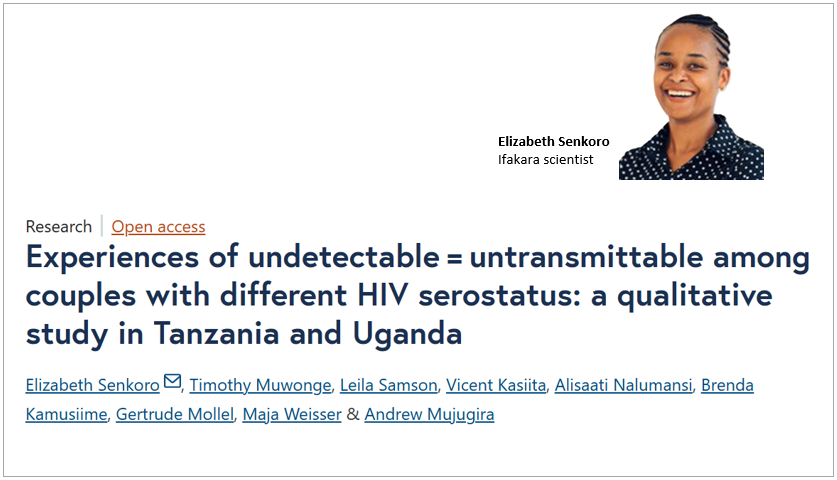
HIV CARE: Science confirms effective treatment prevents transmission in couples

Science is changing what it means to live with HIV – particularly for couples where one partner is HIV-positive and the other is not, known as serodifferent couples. In Tanzania and Uganda, a recent study shows that with growing awareness and adherence to the principle Undetectable = Untransmittable (U=U), these couples can build healthy, loving relationships without fear of transmission.
This progress in HIV care not only empowers people living with HIV to lead long, fulfilling lives but also helps break down stigma, providing hope and encouraging early testing and treatment.
What is U = U?
Undetectable equals Untransmittable (U = U) is a public health message backed by strong scientific evidence. When a person with HIV takes antiretroviral treatment as prescribed and achieves an undetectable viral load, they cannot transmit the virus sexually to their partners.
“When someone with HIV maintains an undetectable viral load through medication, they cannot pass the virus to their sexual partner,” explain the researchers. “This principle, known as U = U, is helping couples build trust, plan families, and live full lives together – without fear.”
Ifakara, Makerere Uni leads the study
The study, published in BMC Public Health, was led by Elizabeth Senkoro from the Ifakara Health Institute, alongside colleagues Leila Samson, Gertrude Mollel, and Maja Weisser. Experts from Uganda’s Makerere University – Timothy Muwonge, Vicent Kasiita, Alisaati Nalumansi, Brenda Kamusiime, and Andrew Mujugira – also contributed to the research.
Inside the study
Conducted in 2023, the study involved 20 heterosexual serodifferent couples (40 participants total), all around 25 years old, from the towns of Ifakara, Tanzania, and Kasangati, Uganda. Each partner was interviewed separately to understand their awareness, experiences, and adoption of the U = U message in their relationship.
Key findings from the interviews
All participants had heard of U = U and understood the basic idea that effective treatment prevents transmission. While many had initial doubts, their confidence grew as the HIV-negative partners remained uninfected over time.
The study also identified four key themes that were broadly consistent in participants in both countries:
- Knowledge of U = U facilitated adoption: Understanding U = U helped couples embrace it. Initial fears were replaced by growing trust as treatment proved effective.
- Disclosure triggered emotional responses: Telling a partner about one’s HIV status triggered strong emotions – but counselling helped couples move forward, with U = U influencing relationship confidence and fertility decisions.
- Use of additional prevention methods like pre-exposure prophylaxis (PrEP) or condoms, built trust in U = U, addressing residual concerns about adherence and fidelity.
- Stigma remains a major barrier and limited community awareness constrained U = U’s potential impact. Despite knowing that U = U works, many couples reported ongoing stigma from their communities.
HIV-serodifferent couples can live full, healthy lives
This study shows that with the right information, support, and access to treatment, serodifferent couples can live full, healthy lives – and even plan families – without fear. However, it also highlights the urgent need for more community education and health services that explain U = U clearly and provide regular viral load testing and counselling.
“Our study highlights the value of integrating U = U messaging into routine HIV care in ways that go beyond just giving information,” the scientists write. “Tailored, relationship-focused counselling with real-life examples may promote greater trust and uptake.”
They add: “U = U has the potential to strengthen relationships, reduce fear of transmission, and support reproductive goals among HIV serodifferent couples. But to increase its impact, it must be backed by person-centred care, stronger support systems, and serious efforts to address stigma.”
The bottom line: U = U is more than just a concept
For couples affected by HIV, U = U is more than just a concept. As one participant, who has been in a serodifferent relationship for over 13 years, shared: “We are living proof that relationships and HIV can co-exist – safely. I have 100% confidence that HIV treatment is very effective in preventing transmission.”
Read the publication here.
